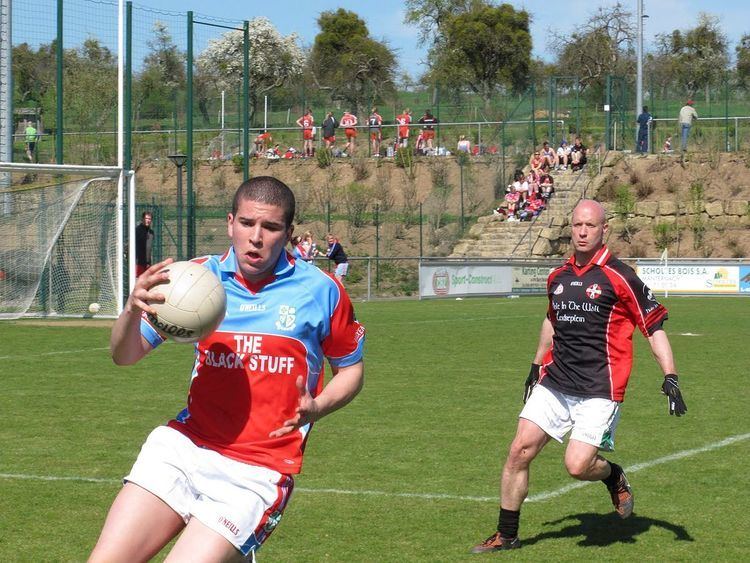Province: Overseas County Dominant sport: Gaelic football | County colours: Blue & Yellow | |
 | ||
Irish: Cumann Luthchleas Gael na hEorpa Ground(s): Sportspark West, Negenputruwe 1-5, 6218 RA, Maastricht, Netherlands | ||
The European Board of the Gaelic Athletic Association (GAA) (Irish: Cumann Luthchleas Gael na hEorpa) or Gaelic Games Europe is one of the international units of the GAA (outside Ireland), and is responsible for organising Gaelic games in continental Europe. Gaelic Games Europe is also responsible for the European Gaelic football, hurling, camogie and ladies' Gaelic football teams.
Contents
The first evidence of Gaelic games in Europe dates back to a hurling match in 1774 in Belgium, various games were played across the continent after that with their frequency increasing in the late 20th century. While sporadic attempts were made to form clubs and organise competitions, the first five clubs were organised into a ‘County’ Board at a meeting in 1999 organised by the late Joe McDonagh, the then President of the GAA. Since then, rapid growth has resulted in 87 clubs spread across 21 countries, catering for over 3,000 players who play camogie, hurling, men’s & ladies football and handball competitions from Oulu near the Artic Circle in Finland to Gibraltar beside the Mediterranean and from the tiny Channel Islands to big cities such as Moscow in Russia. The European County Board (ECB) changed its name to Gaelic Games Europe at the Annual Convention in Leuven (Belgium) in November 2016.
Competitions format
In GAA terms 'Europe' comprises all of continental Europe (excluding Ireland & Great Britain) with great distances between each team, so Gaelic Games Europe has various competition formats. Since 2006, football competitions have been played on a regional basis. Europe is divided into five regions: Benelux, East and Central, Iberia, North West and Nordic. From February to August, each team plays in its regional competition with the top two teams qualifying for the European Champions Cup which is limited to 12 teams and played off in one day. Some regions also have sub-regional structures with their own local competitions (Brittany, Galicia, Andalusia).
All teams can also play in the European Men's and Ladies Football Championships (11-a-side) held as a one-day event with teams seeded into different grades (Men: Senior, Intermediate and Junior / Ladies: Championship & Shield).and the 'Premier' championships which are for 15-a-side teams in men's and ladies football with the winners representing Europe in the 'All Ireland Club Championships.
Other matches such as internationals (which have featured France, Italy, Galicia and Brittany) are also played, along with 'Cup' competitions for teams in Finland and Germany.
Many competitions feature a system of rounds in the form of tournaments with three to eight rounds played annually to determine the new champion in each region (football/ladies football) as well the European Camogie and Hurling Championships. A tournament is competed in a single day with pool stages or in a round-robin format leading to a final. Semi-finals and ranking matches can be played if needed to determine a ranking of every team present on the day. Each team gains a number of points depending on its ranking at each tournament (25 points for the winner, 20 points for the runner-up, etc.). After each tournament points gained are added to determine the championship winner at the end of the season.
Affiliated Clubs
These are the affiliated clubs as August 2016. Brittany (France) and Galicia (Spain) have their own leagues and selections. Teams hailing from these two regions play both locally and in their national leagues (France and Iberia).
